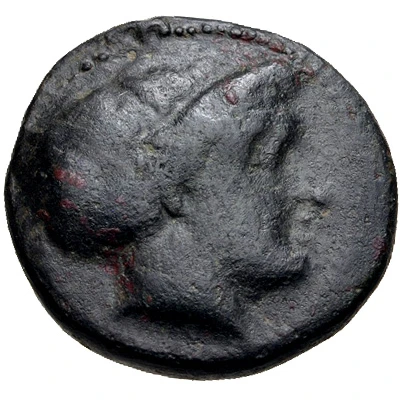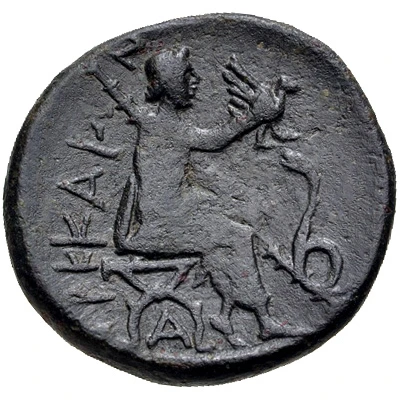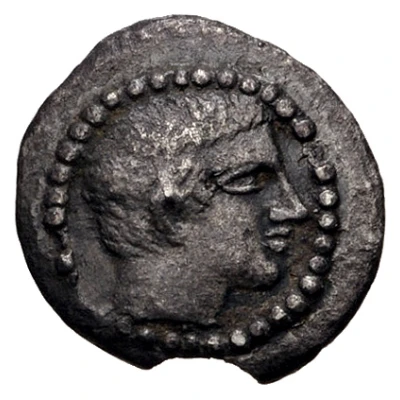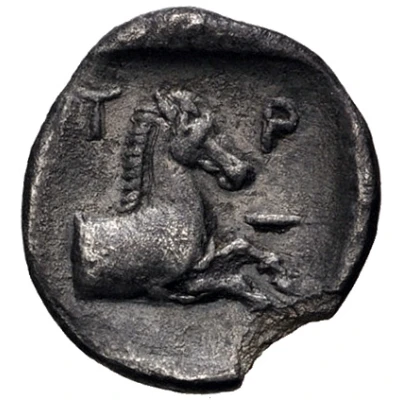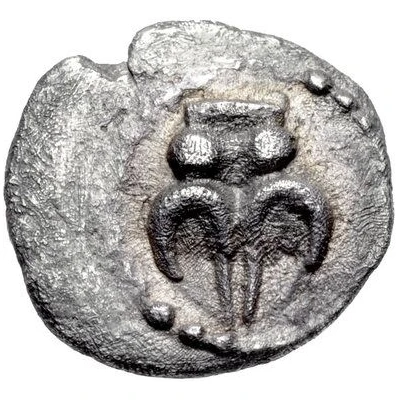
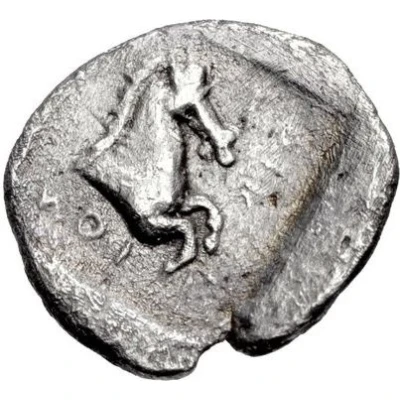

© Classical Numismatic Group, Inc.
Hemiobol 460 BC - 440 BC
| Silver | 0.32 g | 9 mm |
| Issuer | Trikka (Thessaly) |
|---|---|
| Type | Standard circulation coin |
| Years | 460 BC - 440 BC |
| Value | Hemiobol (1⁄12) |
| Currency | Drachm |
| Composition | Silver |
| Weight | 0.32 g |
| Diameter | 9 mm |
| Shape | Round (irregular) |
| Technique | Hammered, Incuse |
| Demonetized | Yes |
| Updated | 2024-10-10 |
| Numista | N#396165 |
|---|---|
| Rarity index | 100% |
Reverse
Forepart of horse right, all in shallow incuse square.
Script: Greek
Lettering: T-PIK-K-A-IOИ
Comment
Liampi, Corpus, p. 112, K 1 a (V1/R1), pl. 5, 50. Unique.
Interesting fact
The Hemiobol coin was used as a form of currency in ancient Greece, specifically in the region of Thessaly, and its design features a unique combination of symbols and imagery. On one side of the coin, there is an image of a horseman, while on the other side, there is an image of a lion's head. These symbols were chosen to represent the power and strength of the city of Trikka, and they were meant to convey the idea that the city was a place of great importance and influence. It's also worth noting that the Hemiobol coin was made of silver, which was a valuable and highly sought-after metal at the time. The fact that the coin was made of silver speaks to the wealth and prosperity of the city of Trikka, and it's a testament to the advanced economic systems that existed in ancient Greece. Overall, the Hemiobol coin is an interesting and valuable artifact that provides insight into the culture, economy, and society of ancient Greece, and it's a great example of the rich history and heritage of the region.
